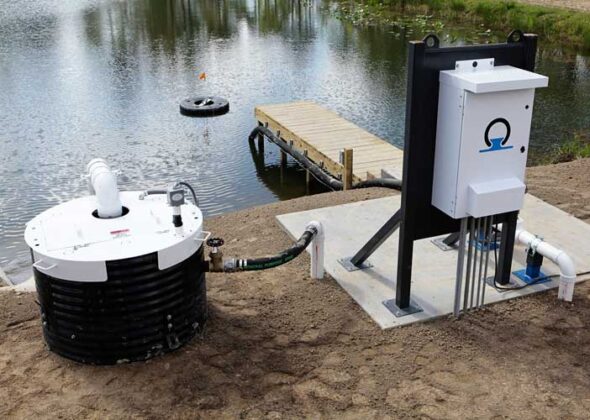Subsurface Irrigation Solutions
Ellingson is a leading innovative construction company specializing in agricultural water management solutions since 1970. We have extensive experience designing and installing subsurface irrigation systems to help farmers precisely control soil moisture levels. A Subsurface Irrigation design gives you all the benefits of a properly engineered drainage system, while holding subsurface water in the active root zones to supplement soil moisture content during critical growing periods.
What is Subsurface Irrigation?
Subsurface irrigation, also called subsurface drip irrigation (SDI), is an irrigation method that delivers water directly to the root zone of crops through a system of buried tubes/pipes, emitters, and driplines installed below the soil surface.
The driplines and emitters are typically buried 8-12 inches under the ground, though the depth can vary from 6-24 inches depending on factors like soil type, crop, and climate. Emission devices are positioned at strategic locations along the submains and driplines, discharging water at very low flow rates directly into the soil.
As the water slowly permeates the soil from the buried driplines, it is absorbed by plant roots within the wetted zone shaped by emitter discharge and soil hydraulic properties.

How Does Underground Irrigation Work?
Underground irrigation works by distributing water directly into the plant root zone through a network of subsurface pipelines and emitters. Here are the key steps:
- Water is pumped into the mainline from the source after filtration.
- Fertilizers or chemicals can be injected as needed.
- Control valves regulate different irrigation zones.
- Emitters discharge water at very low flow rates into the buried drip lines.
- Water slowly permeates the soil, saturating the root zone.
- Excess water recharges groundwater while salts get leached.
- A controller automates system operation based on irrigation schedules.
Where can Subsurface Irrigation be used?
Subsurface irrigation has a wide range of applications, as it can be used to irrigate:
- Orchards and vineyards
- Row crops like corn, cotton, sorghum, sugarcane
- Vegetables like tomatoes, potatoes, onions, broccoli
- Forage crops like alfalfa
- Turf grass and landscaping
- Nurseries and greenhouses
It is suitable for virtually any crop that has a significant rooting depth and lateral root development. As with Controlled Drainage, Subsurface Irrigation works best on topography with less than 0.5% slope and in geographic regions that regularly experience extended dry periods or irregular precipitation patterns.
What are the advantages of using Subsurface Irrigation?
Some key benefits of subsurface irrigation include:
- Water Savings: Reduces water use by up to 70% compared to conventional irrigation
- Energy Savings: Requires less energy than other pressurized irrigation systems
- Labor Savings: Automation reduces labor requirements for irrigation operation
- Fertilizer Savings: Allows targeted root zone application reducing fertilizer needs by 30-50%
- Increased Yields: Enhances crop yields and quality due to optimal moisture and fertigation
- Weed Control: Dry soil surface prevents weed seed germination, reducing growth by 50-80%
- Reduced Erosion: Eliminates runoff, preventing topsoil loss and nutrient depletion
- Reduced Disease Pressure: Drier leaves cut down on foliar fungal and bacterial diseases
Who should install Subsurface Irrigation?
Farmers and growers who can benefit the most from subsurface irrigation include:
- Those in water-scarce regions needing to conserve irrigation water
- Growers of high-value specialty crops like orchards, vineyards, and vegetables
- Farmers wanting to automate irrigation scheduling for labor savings
- Those with oddly shaped fields or fragmented land parcels
- Producers wanting to reduce irrigation runoff and soil erosion
- Growers using effluent water requiring scheduled subsurface disposal
Contact us to learn more
Have a question? Need an estimate or more detail on our services?
Or just want a call-back? Let’s get in touch.